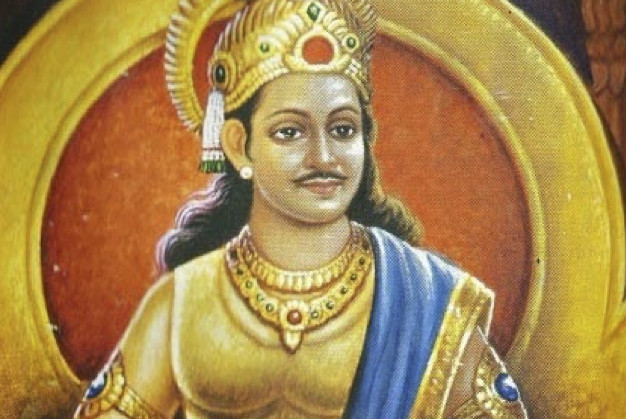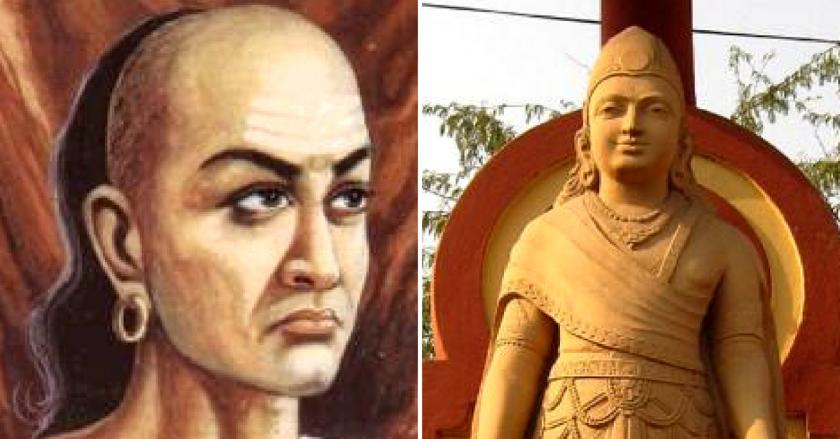How Did Chandragupta Die?
How Did Acharya Chanakya Die? There are many theories on this. Some say he was simply eaten by jungle animals, others say that he committed suicide by hanging himself from a tree. But whichever way you look at it, the story behind how did Acharya Chanakya die is more interesting than you think.
According to one story, Acharya Chanakya was a scholar, deeply respected by all the kings in India. He was so accomplished that even the scholar-king Narashmin heard about him.
However, when Narashmin arrived to see him in his cave, he was told that he was a famous scholar and had written extensively on ancient subjects. So he conferred him with the ‘royal office’ for a day. However, the king had other plans for the sage and he poisoned him to death.
Another version of the story says that Chanakya was found dead in his sleep. A son by his second wife came looking for his father and discovered that he was wearing an iron collar around his neck.

Thinking it might be a dream, he woke up and asked his father where he was resting. Hearing his words, the sleeping emperor Narashmin realized that his son had been murdered. Then he picked up the head of the sleeping man and made it into a pendant and proceeded to drag it through the desert as proof of the crime.
It was discovered by the sage dhana and who happened to pass by and took it to guru shiksha.
Guru shiksha examined the necklace and pronounced that it was not from a royal family. The emperor learned of this and decided to execute dhana nanda. However, the king was not contented with this and made a huge fuss.
He had all the royal guards, led by a bodyguard, lined up outside the palace and waited for the emperor to arrive. When he came, the guards let him in, but the emperor hit him with the rod which broke his bones.
Another version of the story says that while the sage was sleeping, the emperor Lahaul came and poisoned him. However, the legendary king continued to live and hence, was revered as a god by all the people. After he breathed his last, his children laid a shade over his head. They were believed to be responsible for his untimely death.
In the third century BCE, kautilya was brought to Varanasi by sage Kapil’s son Vashnu. He wrote a kautilya or a philosophical text on the philosophy of karma. Kautilya’s work, known as the Mahabaratha, is the earliest of three classic games which are the basis of Indian social science and are believed to have been written by pandit Deities like Chandra Bala (Lord Krishna), Swarjika (lord Chrysantha), Ksheer (princess Shaka), Suryavar (king Bharatpur), and Bhallatasav (Bhagavan, the founder of Vaishali sect) and was read and greatly admired by Chandragupta, the Mauryas, and later by Raja-vedic scholar sage Vedas.
It was this influence that Kautilya’s philosophy, especially the Shastra, spread among the masses and prompted them to write Kautilya-Vishnu ka or The Kautilya-Vishnu Yashna, a compilation of the several shastras or hymns of the Kautilya period.
Another sage of the Kautilya dynasty, who also wrote a significant kama is Chandra Gupta. Like the aforementioned kings, he too wrote a significant dama or philosophical treatise on the philosophy of karma. In fact, his philosophy is probably closest in comparison with that of Vayu, as he also wrote a book on the Kriti or the Yama or virtue.
However, he differs from Vayu in his presentation of the ethics of Karma. Chandra Gupta’s philosophy also has much influence on the thinking of his descendants who followed in his footsteps. However, the most notable influence on the thinking of the present day Kautilyas is the writing of Maitreya, a Brahmin sage of the Nanda clan.

Although Chandra Gupta was not the last of the greats of kautilya, he was the last of a lineage of sages who founded important temples in Kautilya, namely, the Charvini Temple and the temple of Dhana Nanda in Nanda village, near Nanda Nadu (present-day Rajasthan).
This shows that the Kautilya dynasty reached its zenith not with the demise of one sage but with the prolific induction of many sages. All the greats were either divine scholars or great religious men; in fact, some were both. It is this feature that makes us believe that the Kautilya dynasty was not limited to one sage but was actually a continuation of the lineage of sages.
In this light, we can better understand how the Kautilyas died.
The question of how did chanakya die has been disputed since his demise. Some have seen him as having gone to Parthia with the rest of the band dynasty, while others believe he escaped to India and founded an empire after his return.
As it turns out, dhana and actually meant “the son of the nanda.” This would mean that he was the last of a line of kings who founded the band dynasty, which would make him the last of an ancient royal line.













